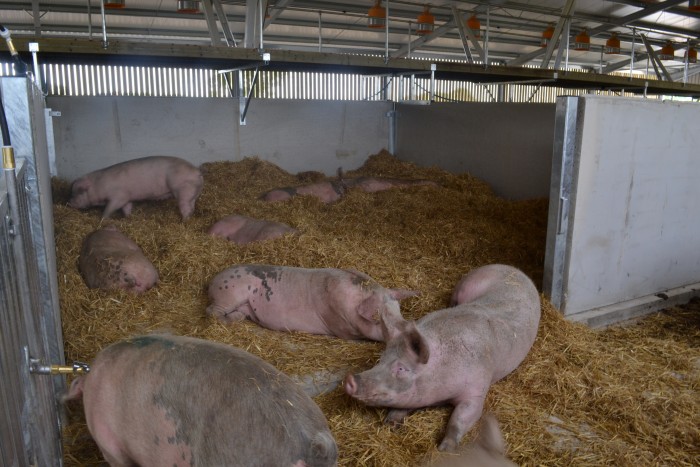Maisie Lord is a pig nutritionist for Cargill. Based in North Yorkshire, she worked at Cargill’s innovation centre in the Netherlands before joining the UK team
Feed conversion rate (FCR) can make a significant difference to the performance of the grower finisher herd.
However, these rates vary significantly between units and between batches on the same unit. If the annual average FCR on a wean-to-40kg slatted system is 1.75, typical variation might be anywhere from 1.67 to 1.91 between batches.
We can start to understand this variation when we look at FCR as an independent performance parameter, rather than just a consequence of growth and feed intake. There are many factors, typically related to nutrition, genetics and environment, that affect the FCR.
A simple calculation demonstrates the impact that an improvement in FCR can have.
An average FCR in growing pigs from 7kg to 110kg of 2.29, with an average feed cost per tonne (at time of writing) of £274 gives a feed cost/pig of £64.35. If 28.4 pigs/sow/ year are sold at 85kg deadweight, with an SPP of £1.35/kg (at the time of writing), the annual margin over feed/sow would be £1,503.
If the FCR is 2.39 – i.e. 0.1 difference, based on the same feed cost/tonne, the average feed cost increases to £67.34/pig and the margin over feed drops to £1,418/ sow/year.
Based on this ‘poorer’ FCR of 2.39, you would have to sell approximately 30.2 pigs/sow/year – or two extra pigs – to make up this difference.
This is a very simple way of running the costings and doesn’t take into account differences in growth rates, increased time to slaughter, or the nominal cost assigned for sow or gilt feed/head in breeding-to-slaughter systems.
But it does show that FCR is a key influencer on the bottom line. This won’t come as a surprise – but the extent of its influence might, and it is worth looking at the factors that contribute to its value.
In the area of nutrition, one danger zone is the temptation to counter feed price increases by opting for cheaper diets to try to preserve financial performance – bearing in mind that feed costs account for between 60% and 80% of production costs. But if these cheaper diets affect FCR, perhaps because of changes in nutrient density, then it is false economy.
Other, related management factors such as grist size and trough space can play a part in FCR.
It could be that a review of these areas will help to boost FCR and take out some of the variance between batches.
Most important, though, is the recording and measuring of FCR for each batch to allow for comparison with the unit’s benchmark and to provoke questions and pinpoint the areas for attention. We can then start to make inroads into improving the FCR bottom line.




